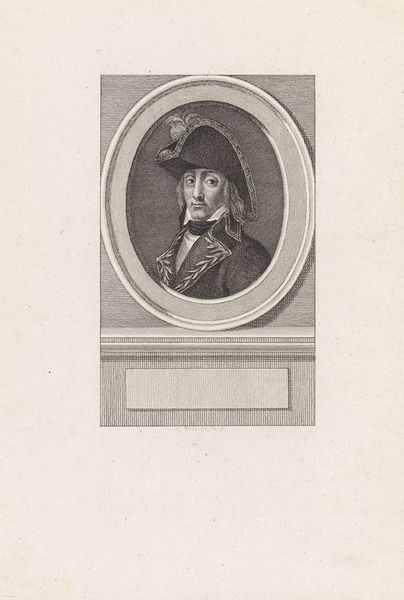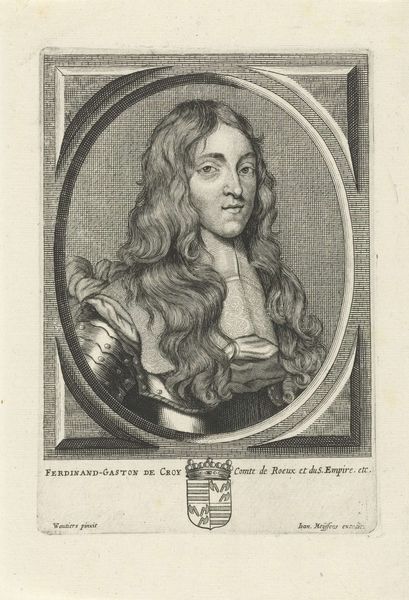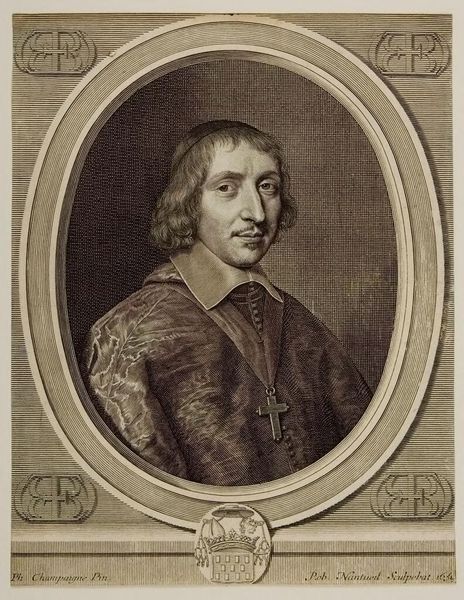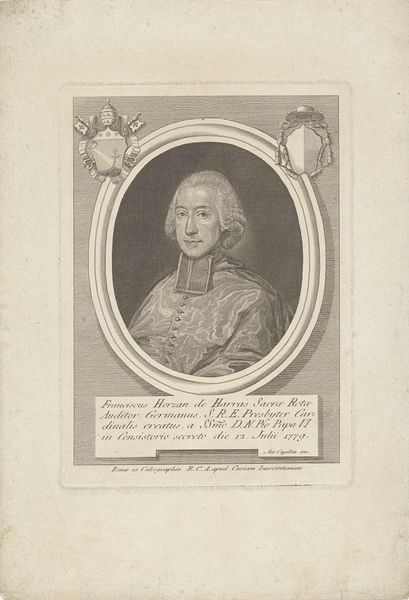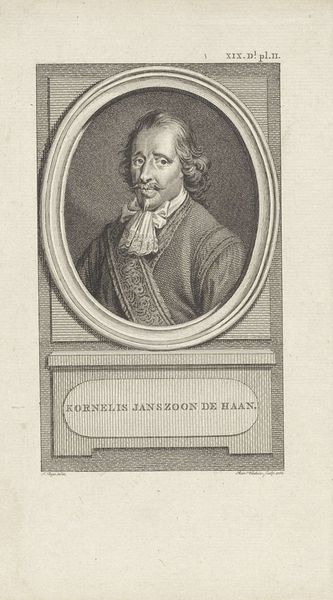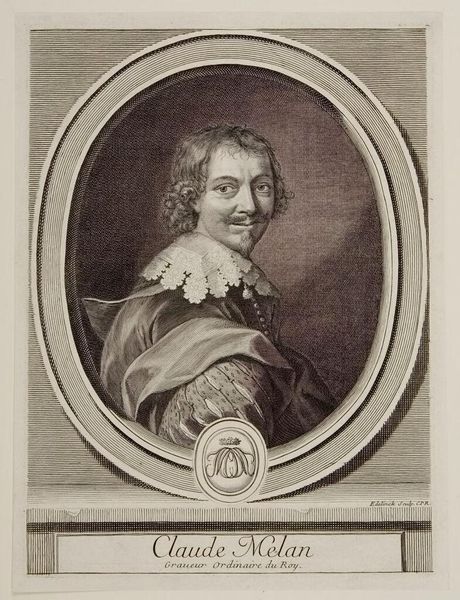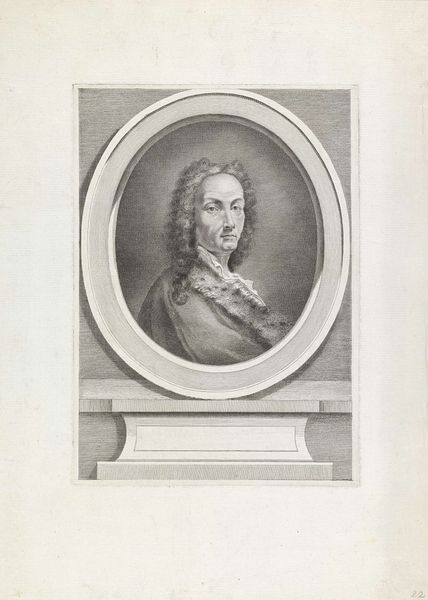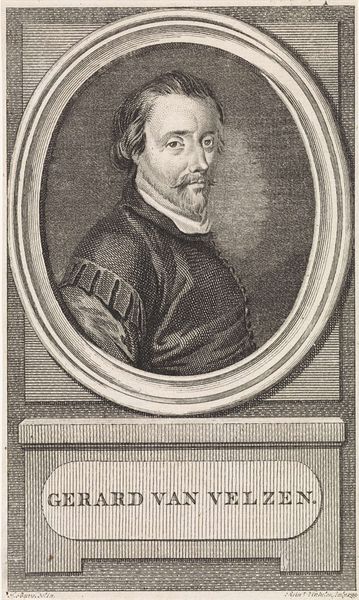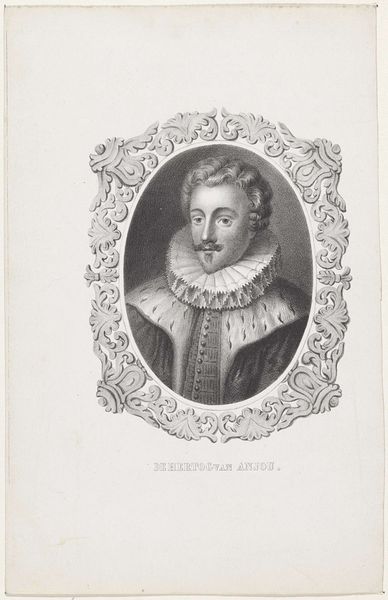
Portret van Pierre François Charles Augereau, maarschalk van Frankrijk 1807
0:00
0:00
print, engraving
#
portrait
#
neoclacissism
# print
#
old engraving style
#
history-painting
#
engraving
Dimensions: height 222 mm, width 125 mm
Copyright: Rijks Museum: Open Domain
This engraving by Ludwig Portman depicts Pierre François Charles Augereau, a Marshal of France. The image presents Augereau in a Neoclassical oval, a format recalling ancient Roman portraiture, which was popular during the French Revolution and Napoleonic era. France in this period was undergoing radical social and political upheaval. The Revolution sought to dismantle the old aristocratic order, but the subsequent rise of Napoleon saw the emergence of a new kind of hero based on military prowess. Augereau, a celebrated military commander, became a symbol of this new social mobility, rising through the ranks based on talent rather than birth. Portman's engraving reflects the institutionalisation of revolutionary ideals in the visual arts. The image idealises Augereau, presenting him as a figure worthy of admiration and emulation. To fully understand this print, one might research the institutions that supported its creation. Studying the print market, and the patronage networks that supported artists like Portman, would help us understand the social conditions that shaped this image.
Comments
No comments
Be the first to comment and join the conversation on the ultimate creative platform.
